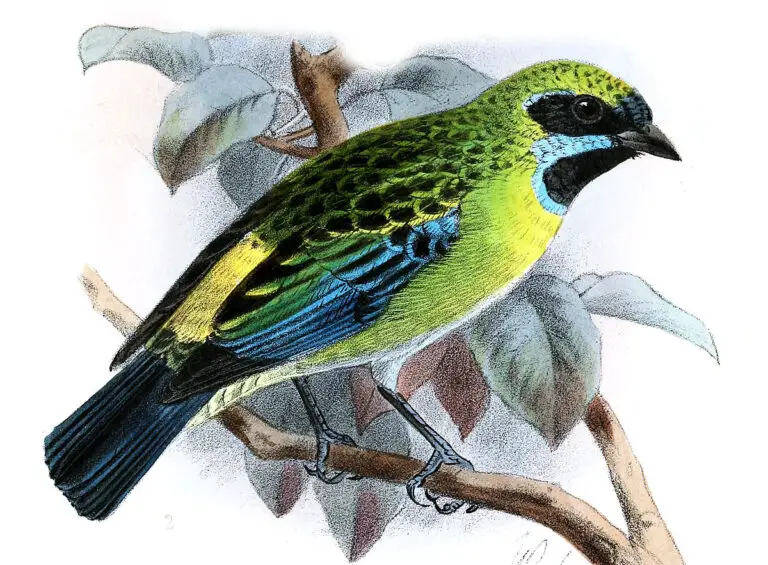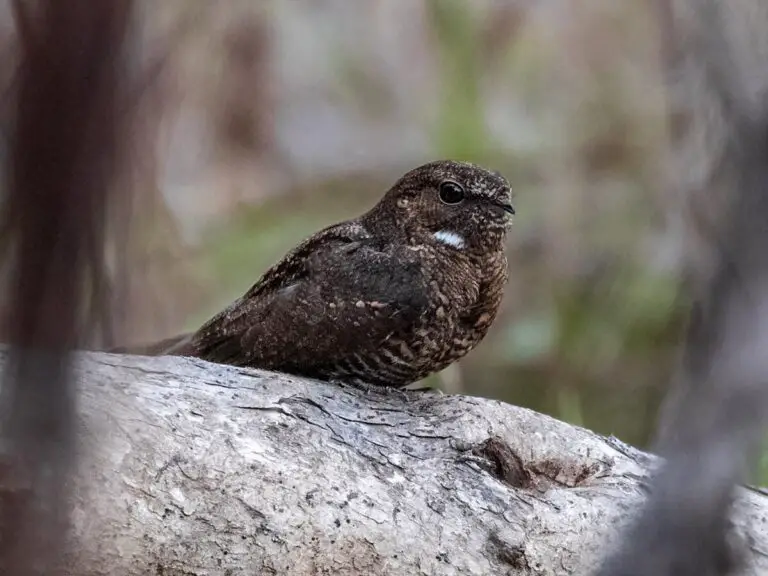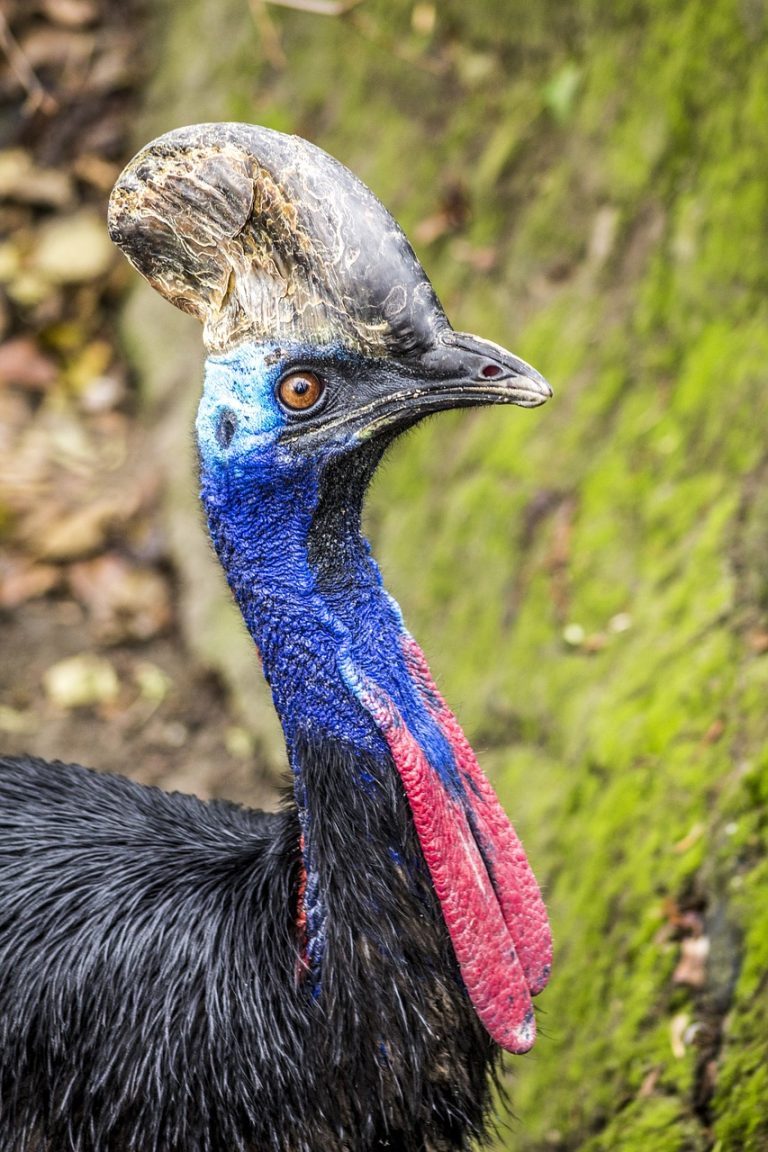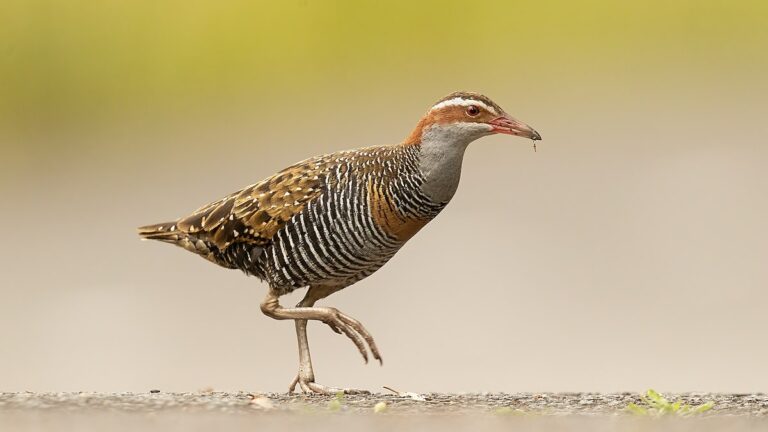Great Egret (Ardea alba)
“The male egret performs an elaborate courtship display to attract a mate.”
The Great Egret, scientifically classified as Ardea alba, belongs to the following taxonomic hierarchy:
- Kingdom: Animalia
- Phylum: Chordata
- Class: Aves
- Order: Pelecaniformes
- Family: Ardeidae
- Genus: Ardea
- Species: Ardea alba
As for its distribution, the Great Egret can be found in various regions around the world, including Africa, Asia, Europe, and Oceania. It typically inhabits wetland areas such as marshes, lakeshores, and coastal regions.
Great Egrets are fascinating creatures with a host of interesting attributes:
- Prey: Their diet consists of fish, mice, frogs, snakes, crayfish, and insects.
- Fun Fact: Male egrets perform intricate courtship displays to attract mates.
- Population: Estimated to range from 590,000 to 2.2 million mature individuals.
- Biggest Threat: Habitat loss poses the most significant danger to their populations.
- Distinctive Feature: Notably long and slender legs.
- Other Names: Also known as the Great White Egret, Common Egret, and Great White Heron.
- Wingspan: Can reach up to 1.5 meters (5 feet).
- Incubation Period: Eggs hatch after 23-24 days of incubation.
- Habitat: They are commonly found in lakes, swamps, and wooded wetlands.
- Predators: Crows, jays, vultures, and raccoons are among their predators.
- Diet: Classified as carnivores.
- Type: They belong to the bird category.
- Common Name: Great Egret is their widely used name.
- Number of Species: There’s only one species in the Great Egret genus.
- Location: They are distributed across Europe, Asia, Africa, and the Americas.
- Nesting Location: Often build nests next to the shore.
- Age of Molting: Molting typically begins at around 6-7 weeks.
- Migratory: Yes, they are migratory birds.
- Physical Characteristics: They are predominantly white in color, with a lifespan of 15-23 years, weighing around 1kg (2.5lbs), and standing at about 1 meter (3.3 feet) tall.
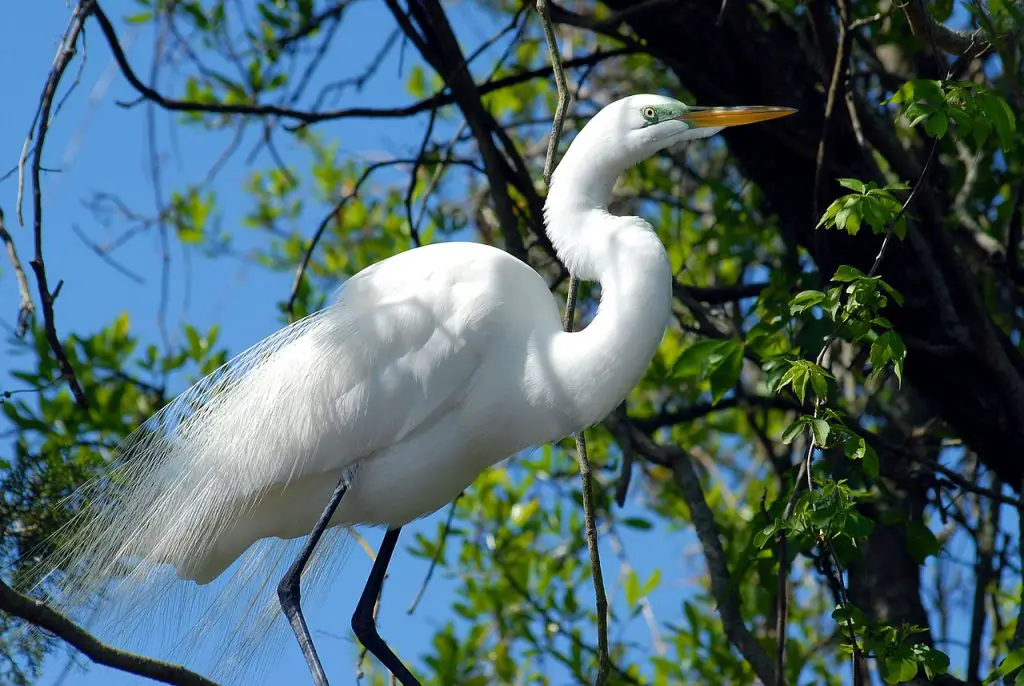
Great Egrets are indeed fascinating creatures with their distinctive long legs, which resemble stilts, aiding them in wading through shallow waters effortlessly as they hunt for prey in wetlands and swamps. These habitats serve as their primary residence throughout their lives. Despite often living in colonies, competition for mates among Great Egrets can be observed.
In addition to their physical attributes, their behavior and migration patterns are equally intriguing. They exhibit various social behaviors within their colonies and engage in elaborate courtship displays, particularly during mating seasons. Furthermore, Great Egrets are known for their migratory nature, traversing long distances between breeding and wintering grounds, highlighting their adaptability and resilience across diverse environments.
Understanding these aspects of Great Egrets provides valuable insight into their ecology and evolutionary adaptations, shedding light on their significance within ecosystems and their interactions with other species.
3 Great Egret Amazing Facts
Great Egrets boast some truly remarkable features:
- Retractable Neck in Flight: During flight, the Great Egret showcases a unique trait among herons by retracting its long, curved neck. This characteristic sets it apart from storks and cranes, highlighting its specialized adaptation for aerial movement.
- Breeding Season Ornamental Feathers: As breeding season approaches, the Great Egret dons a stunning display of soft and delicate ornamental feathers that sprout from its back. These long, sinewy feathers serve a dual purpose, enhancing its allure and aiding in attracting a mate, showcasing the intricacies of courtship rituals in the avian world.
- Symbol of the National Audubon Society: The Great Egret holds a prestigious position as a symbol of the National Audubon Society, an organization dedicated to the conservation and protection of birds and their habitats. This recognition underscores the significance of the Great Egret in the realm of bird conservation and environmental advocacy.
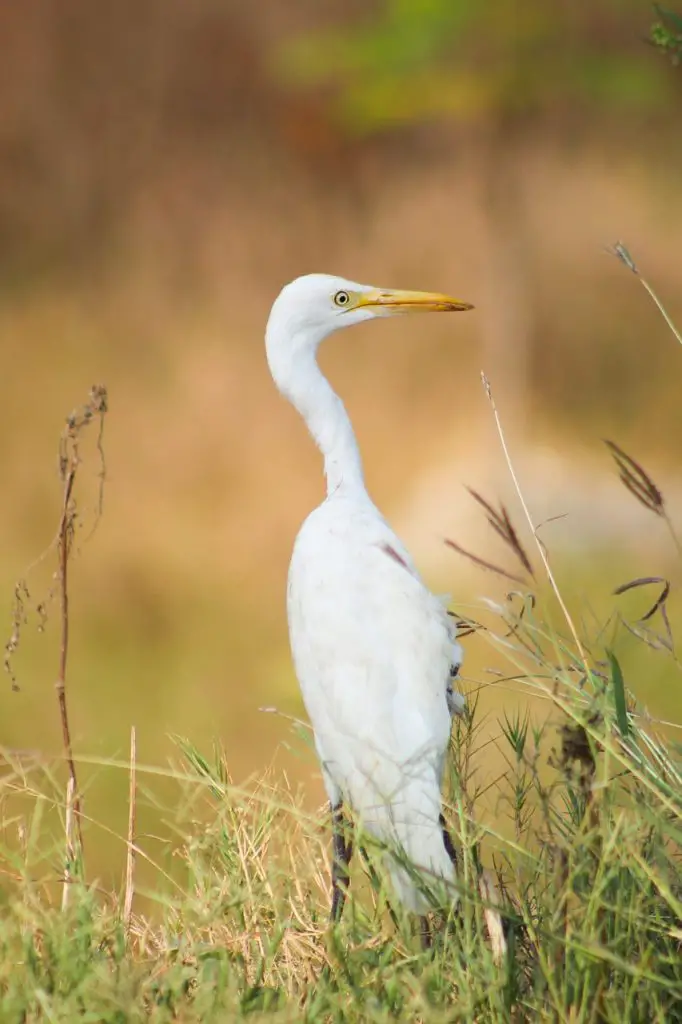
Where to Find the Great Egret
The global distribution of the Great Egret encompasses a wide range of warm or tropical habitats, including lakes, swamps, marshes, ponds, and wetlands. These birds particularly favor areas with extensive reed beds and trees, which provide suitable nesting sites and hunting grounds.
Among the four recognized subspecies, each is primarily associated with distinct geographical regions. One subspecies is prevalent in Europe, another in the Americas, a third in Africa, while the fourth, known as the Eastern Great Egret, is predominantly found in Asia and Oceania.
Interestingly, the Eastern Great Egret exhibits characteristics that almost warrant its classification as a separate species. However, it is currently regarded as a subspecies of the Great Egret. This distinction underscores the remarkable diversity and adaptation of Great Egrets across different regions of the world, reflecting the intricate interplay between geography, ecology, and evolutionary processes.
Great Egret Nests
Great Egret nests are constructed with a combination of sticks, twigs, and stems, typically located in colonies near water bodies such as lakes, swamps, marshes, or ponds. These nests are strategically positioned close to the water, providing easy access for hunting and foraging.
The construction of a Great Egret nest can result in a relatively large structure, with dimensions reaching up to 3 feet in length. This size accommodates the needs of the egret pair and their offspring, offering sufficient space and stability for incubating eggs and raising young chicks. The sturdy composition of the nest materials ensures durability against the elements and provides a secure environment for the nesting family throughout the breeding season.

Great Egret Scientific Name
Indeed, the scientific name of the Great Egret is Ardea alba. The genus name, Ardea, originates from Latin and translates to “heron,” while the species epithet, alba, means “white,” reflecting the bird’s characteristic plumage color.
The Great Egret shares close evolutionary ties with other members of the heron family, including the Gray Heron, Great Blue Heron, Pacific Heron, and various species within the same genus. Despite being classified in different genera, such as Ardea and Egretta, the evolutionary disparity between egrets and herons is relatively minimal.
In terms of taxonomy, some herons are classified within the genus Egretta, while certain egrets are placed in the genus Ardea. The primary distinguishing factor between these two genera often revolves around size, with Ardea members generally being larger than Egretta counterparts. This distinction highlights the nuanced evolutionary relationships and morphological variations within the diverse heron and egret families.
Great Egret Size, Appearance, and Behavior
The Great Egret possesses distinctive physical features that distinguish it from other bird species:
- Long, Slender Black Legs: These legs provide the egret with exceptional agility and stability while wading through shallow waters in search of prey.
- Big White Body: The egret’s predominantly white plumage serves as excellent camouflage in its wetland habitats, allowing it to blend seamlessly with its surroundings.
- Long Yellow Dagger-like Bill: This prominent feature is well-adapted for capturing and grasping prey such as fish, frogs, and other small aquatic creatures.
- Long Neck Forming an S Shape: The egret’s flexible neck enables it to swiftly extend and retract, assuming an elegant S shape when retracted back toward the body, facilitating efficient hunting and preening.
- Height and Wingspan: Great Egrets are impressively tall birds, measuring over 3 feet in height, with an average wingspan of 5 feet. This sizeable stature contributes to their commanding presence in their wetland habitats.
- Sexual Dimorphism: While males tend to be slightly larger than females, distinguishing between the sexes can be challenging due to their similar appearance.
These physical characteristics collectively contribute to the Great Egret’s remarkable adaptability and success in its wetland ecosystems, making it an iconic and widely recognized avian species.
Great Egret Migration and Timing
Great Egrets exhibit distinct behaviors in their daily lives and during the breeding season:
- Communal Roosting: They often congregate in communal roosting sites near the shore, where they gather in large numbers, particularly during the breeding season. These roosting sites provide safety and protection for the birds during resting periods.
- Feeding Habits: Great Egrets are predominantly crepuscular feeders, meaning they are most active during the early morning and late afternoon hours. They spend much of their day foraging in shallow water, using their long legs and sharp bills to capture prey such as fish, frogs, and insects.
- Nesting Behavior: At dusk, Great Egrets return to their nests, which are typically located in colonies near the water’s edge. Here, they gather to rest, preen, and engage in social interactions with other members of the colony.
- Territorial Defense: During the breeding season, Great Egrets become more territorial and aggressive, particularly when it comes to defending their nesting sites. They may exhibit aggressive behaviors such as leaping at or jabbing intruders with their bills while emitting loud squawks to ward off potential threats to their territory and offspring.
These behaviors underscore the social dynamics and adaptive strategies employed by Great Egrets to ensure their survival and reproductive success in their wetland habitats.
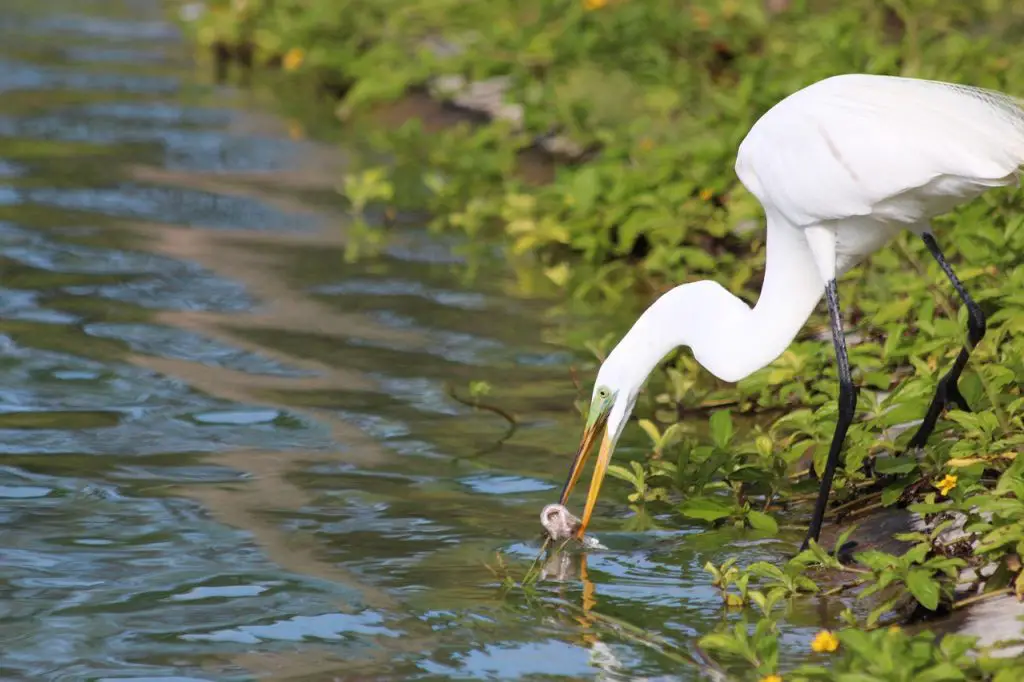
Great Egret Diet
Great Egrets are indeed carnivorous birds, and their feeding behavior is characterized by their remarkable hunting skills and competitive nature:
- Foraging Technique: They typically stand near the shore in shallow water, patiently scanning their surroundings for potential prey. With their long, sharp bills, they swiftly snatch up food items such as fish, frogs, insects, and other small aquatic creatures.
- Competition with Other Birds: Competition for food among wading birds in wetland habitats can be intense, with numerous species vying for limited resources. Great Egrets often find themselves in competition with other birds such as herons, ibises, and egrets, as they all target similar prey species.
- Advantageous Size: Great Egrets possess a significant advantage in this competition due to their enormous height and imposing size. Their towering stature allows them to access deeper waters and spot prey from a greater distance, giving them an edge over smaller competitors.
- Food Stealing Behavior: In particularly competitive situations, Great Egrets may resort to aggressive tactics such as stealing food directly from the mouths of smaller birds. This behavior, known as kleptoparasitism, allows them to capitalize on the hunting efforts of other species and secure a meal without expending additional energy.
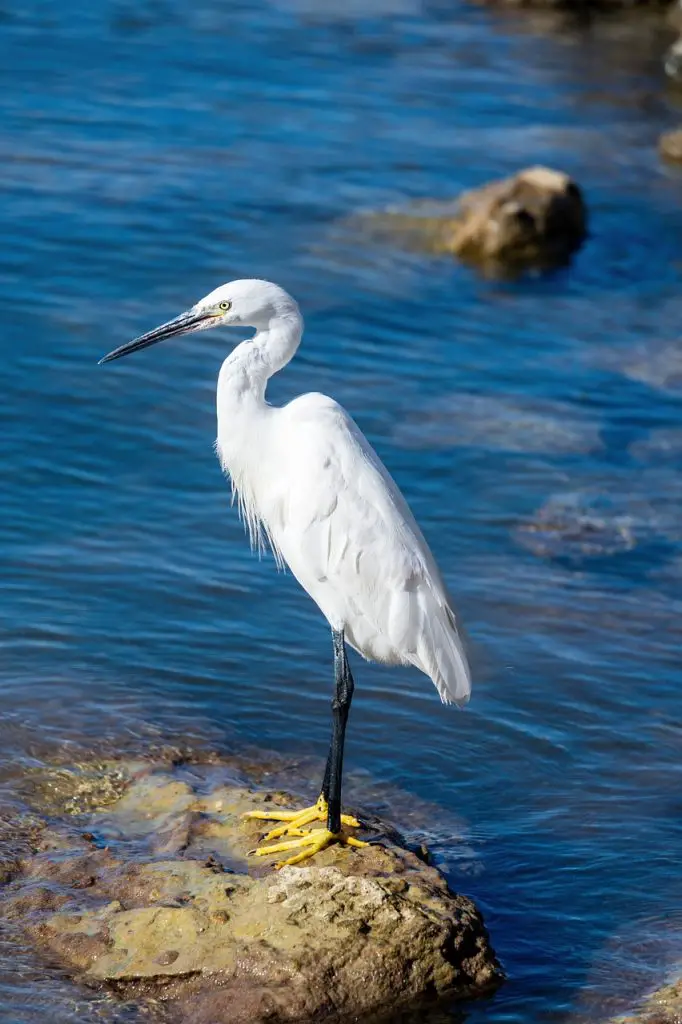
The Great Egret’s carnivorous nature, combined with its physical attributes and competitive strategies, contributes to its success as a top predator in wetland ecosystems.
What does the great egret eat?
The Great Egret possesses a highly diverse diet, reflecting its opportunistic feeding habits and adaptability to various prey sources found in wetland environments. Some key components of their diet include:
- Fish: Fish make up a significant portion of the Great Egret’s diet, with species ranging from small minnows to larger fish depending on availability and habitat.
- Mice: While less common than aquatic prey, mice and other small rodents are occasionally captured by Great Egrets, particularly in terrestrial habitats adjacent to wetlands.
- Frogs: Frogs are a common prey item for Great Egrets, especially during the breeding season when they are abundant near water bodies.
- Snakes: Great Egrets are skilled at capturing snakes, including both aquatic and terrestrial species, using their sharp bills and agile hunting techniques.
- Crayfish: Crayfish are a favored food source for Great Egrets, particularly in freshwater habitats where they are abundant and easily captured.
- Insects: Insects such as dragonflies, grasshoppers, and beetles are readily consumed by Great Egrets, especially during periods of high insect activity.
The Great Egret’s hunting strategy relies on its exceptional speed and precision when striking with its bill. Their ability to accurately target and capture fast-moving prey demonstrates their proficiency as skilled hunters in wetland ecosystems. This diverse diet allows Great Egrets to exploit a wide range of food resources, contributing to their ecological success as top predators in their habitats.
Great Egret Predators, Threats, and Conservation Status
The Great Egret’s current conservation status as a species of least concern according to the IUCN Red List reflects its relatively stable population and widespread distribution across various regions. However, this was not always the case, as historical threats posed significant challenges to their survival.
During the 19th century, the demand for egret plumes, which were used in the fashion industry for decorative purposes, led to widespread hunting and population declines of Great Egrets and other egret species. Fortunately, conservation efforts, including the enactment of protective legislation such as the US Migratory Bird Act, helped mitigate this threat and allowed populations to recover.
Despite legal protections, Great Egrets continue to face threats, primarily stemming from habitat loss and degradation. The conversion of wetlands for agriculture, urban development, and other human activities has resulted in the loss of critical habitat for these birds. Additionally, water pollution poses a significant risk, as contaminants can poison birds and disrupt their food sources. Furthermore, pollutants like pesticides can thin out eggshells, leading to reproductive issues and population declines.
Efforts to conserve and restore wetland habitats, enact and enforce environmental regulations, and raise awareness about the importance of protecting Great Egrets and their ecosystems are essential for ensuring their long-term survival. While the species may currently be classified as least concern, continued conservation action is necessary to address ongoing threats and maintain healthy populations of Great Egrets in the wild.
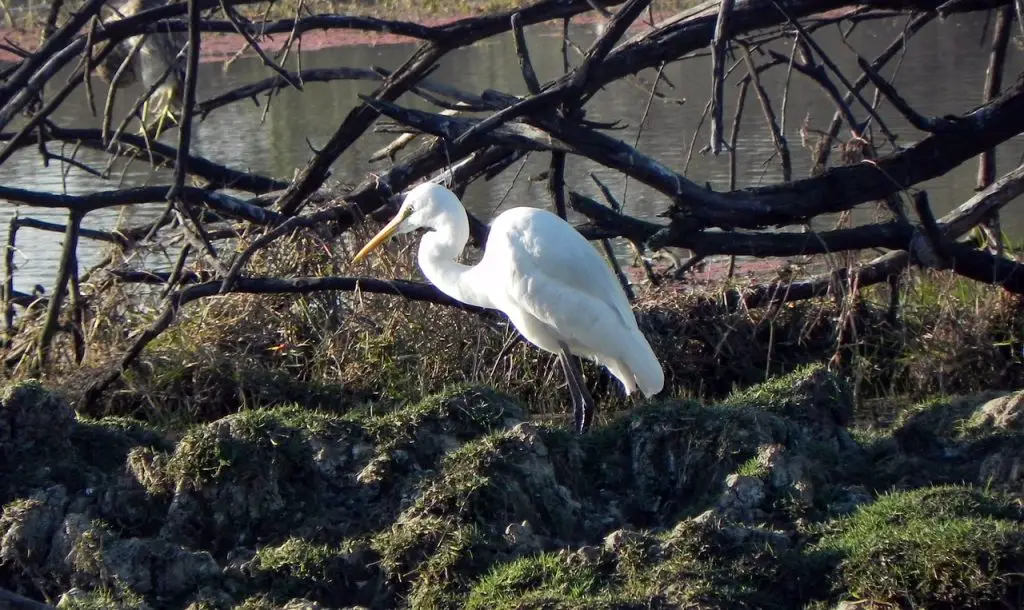
What eats the great egret?
Adult Great Egrets typically have few natural predators due to their large size, impressive stature, and formidable bill. However, eggs and juveniles are much more vulnerable to predation, as they lack the defenses and agility of adults. Some common predators of Great Egret eggs and juveniles include:
- Jays: Certain species of jays, such as Blue Jays and Steller’s Jays, are known to raid bird nests and consume eggs and young chicks.
- Crows: Crows are opportunistic feeders and will often prey on the eggs and nestlings of birds, including Great Egrets, if given the opportunity.
- Vultures: While primarily scavengers, some vulture species may also opportunistically prey on eggs or young birds if they come across vulnerable nests.
- Raccoons: Raccoons are skilled climbers and adept at raiding bird nests for eggs and young chicks. Their dexterous paws and strong jaws make them effective predators of nesting birds.
These predators pose significant threats to the reproductive success of Great Egrets, especially during the nesting season when eggs and young chicks are most vulnerable. Nesting sites located in trees or shrubs may offer some protection from ground-dwelling predators like raccoons, but aerial predators such as jays and crows can still pose a threat. As a result, Great Egrets must employ various strategies, such as nesting in colonies and vigilantly guarding their nests, to minimize the risk of predation and ensure the survival of their offspring.
Great Egret Reproduction, Young, and Molting
During the breeding season, which typically begins in mid-April, male Great Egrets engage in elaborate courtship displays to attract a suitable mate. These displays may include mating calls, circular flight patterns, and striking poses with their bill pointed skyward and wings outstretched. Once a mate is chosen, the pair forms a monogamous bond for the duration of the breeding season.
Together, the male and female Great Egrets construct a nest and lay a clutch of eggs, usually consisting of three to four eggs, although clutches of up to six eggs have been reported. In the event of egg damage or loss, the female can quickly replace it with another egg.
After an incubation period of approximately 23 to 24 days, the eggs hatch, giving rise to fluffy white down-covered chicks. These hatchlings are entirely dependent on their parents for food and protection. Both parents diligently feed the chicks by regurgitating food directly into their mouths.
As the chicks grow, they gradually develop their flight feathers over a period of two to three weeks. By around six to seven weeks of age, they are ready to leave the nest and begin exploring their surroundings. The average age for sexual maturity in Great Egrets is approximately two years.
In the wild, Great Egrets typically have a lifespan of around 15 years, while those in captivity can live nearly 23 years. This lifecycle, from courtship and nesting to fledging and maturation, underscores the remarkable journey of growth and survival undertaken by Great Egrets during the breeding season and throughout their lives.

Great Egret Population
The Great Egret’s population has undergone significant fluctuations throughout history, with a notable decline by the turn of the 20th century due to hunting pressure for their plumes, which were highly prized in the fashion industry. However, thanks to conservation efforts and the implementation of protective measures, such as hunting bans and habitat preservation, Great Egret populations have rebounded considerably.
Currently, the estimated population of Great Egrets in the wild ranges from 590,000 to 2.2 million mature individuals. This increase in numbers reflects the success of conservation initiatives in safeguarding the species and its habitat.
Furthermore, the expansion of the Great Egret’s range is another positive indicator of population recovery. In recent years, Great Egrets have been observed breeding in new areas, including the United Kingdom, where the first breeding pair was established in 2012. This expansion of their range demonstrates the species’ resilience and adaptability in response to changing environmental conditions and conservation efforts.
The recovery of Great Egret populations from historical declines serves as a testament to the effectiveness of conservation measures and the importance of ongoing efforts to protect and preserve wetland habitats for these iconic birds and other wildlife species.
Conclusion
The Great Egret stands as a testament to the power of conservation efforts in reversing population declines and restoring species’ vitality. Once threatened by hunting and habitat loss, this majestic bird has rebounded to become a symbol of resilience and adaptability. With its striking appearance, diverse diet, and vital role in wetland ecosystems, the Great Egret serves as a reminder of the importance of protecting and preserving natural habitats for the benefit of both wildlife and humanity.
